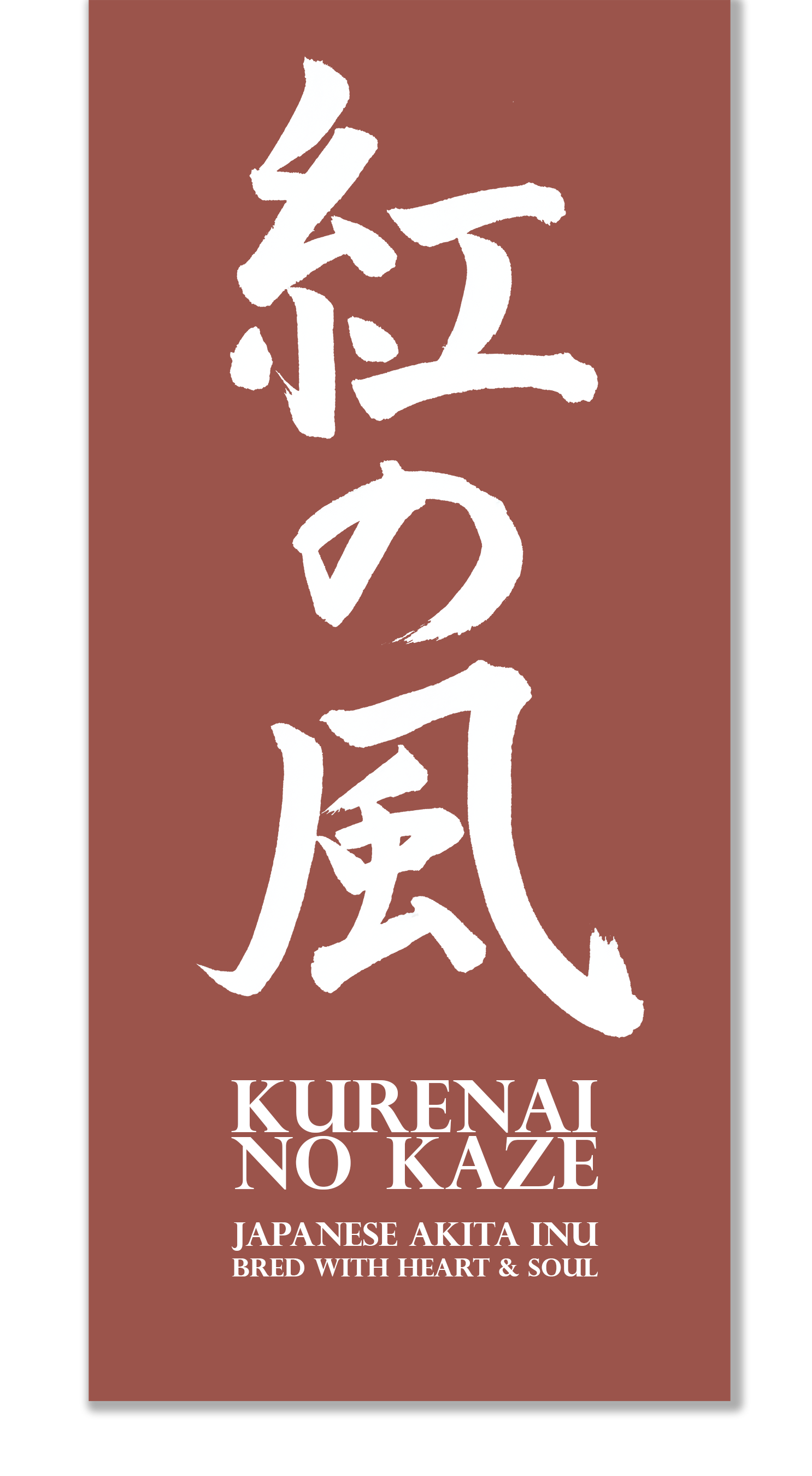"Akita Inu Hyoujun" - The breed standard of the Japanese Akita Inu.
The Akita Inu is a breed that knows several standards. For example, in Japan there is the AKIHO, NIPPO and AKIKYO—the latter is now defunct—each having their own version, and in the West there is the JKC-based FCI breed standard. At Kurenai No Kaze the best of both worlds is used, taking the FCI standard into account, while assigning the greatest importance to what AKIHO's specialists and breed standard tell us.
FCI-Standard N°255 / 02. 04. 2001 / GB
ORIGIN : Japan
DATE OF PUBLICATION OF THE ORIGINAL VALID STANDARD : 13-03-2001
UTILIZATION : Companion dog
CLASSIFICATION F.C.I. : Group 5 - Spitz and primitive type. Section 5 - Asian Spitz and related breeds. Without working trial.
GENERAL APPEARANCE
Large-sized dog, sturdily built, well balanced and with much substance ; secondary sex characteristics strongly marked, with high nobility and dignity in modesty ; constitution tough.
IMPORTANT PROPORTIONS
The ratio of height at withers to length of body (from the point of the shoulders to the point of the buttock) is 10 : 11, but the body is slightly longer in bitches than in dogs.
BEHAVIOUR AND TEMPERAMENT
The temperament is composed, faithful, docile and receptive.
HEAD
Skull : The size is in proportion to the body. The forehead is broad, with distinct furrow. No wrinkle.
Stop : Defined.
Nose : Large and black. Slight and diffuse lack of pigment accepted in white dogs only, but black is always preferred.
Muzzle : Moderately long and strong with broad base, tapering but not pointed. Nasal bridge straight.
Jaws/Teeth : Teeth strong with scissor bite
Lips : Tight
Cheeks : Moderately developed
Eyes : Relatively small, almost triangular in shape due to the rising of the outer eye corner, set moderately apart, dark brown : the darker, the better.
Ears : Relatively small, thick, triangular, slightly rounded at tips, set moderately apart, pricked and inclining forward.
NECK
Thick and muscular, without dewlap, in balance with head.
BODY
Back : Straight and strong
Loin : Broad and muscular
Chest : Deep, forechest well developed, ribs moderately well sprung.
Belly : Well drawn up.
TAIL
Set on high, thick, carried vigorously curled over back ; the tip nearly reaching hocks when let down.
LIMBS FOREQUARTERS
Shoulders : Moderately sloping and developed.
Elbows : Tight.
Forearms : Straight and heavy-boned.
LIMBS HINDQUARTERS
Well developed, strong and moderately angulated.
FEET
Thick, round, arched and tight.
GAIT
Resilient and powerful movement.
COAT
Hair : Outer coat harsh and straight, undercoat soft and dense ; the withers and the rump are covered with slightly longer hair ; the hair on tail is longer than on the rest of the body.
Colour : Red fawn, sesame (red fawn hairs with black tips), brindle and white. All the above mentioned colours except white must have « urajiro » (urajiro = whitish coat on the sides of the muzzle, on the cheeks, on the underside of jaw, neck, chest, body and tail and on the inside of the legs).
SIZE
Height at the withers : dogs 67 cm, bitches 61 cm (there is a tolerance of 3 cm more or less).
FAULTS
Any departure from the foregoing points should be considered a fault and the seriousness with which the fault should be regarded should be in exact proportion to its degree and its effect upon the health and welfare of the dog.
Bitchy dogs / doggy bitches
Undershot or overshot mouth
Missing teeth
Blue or black spotted tongue
Iris light in colour
Short tail
Shyness
DISQUALIFYING FAULTS
Aggresive or overly shy
Ears not pricked
Hanging tail
Long hair (shaggy)
Black mask
Markings on white ground
Any dog clearly showing physical or behavioural abnormalities shall be disqualified.
Male animals should have two apparently normal testicles fully descended into the scrotum.


